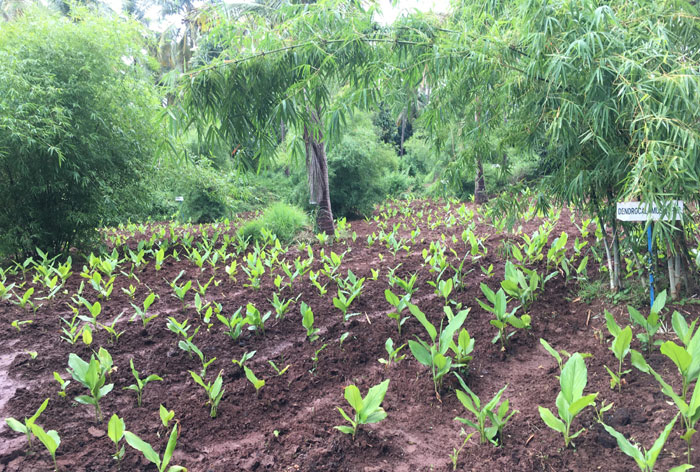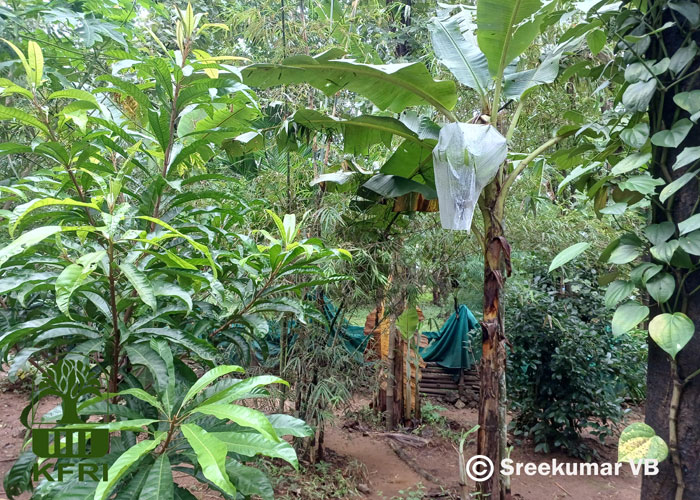The gestation time of a bamboo plantation is 5 years, so the interspace can be used for extra income during the first 3 years by planting intercrops such as ginger, chillies or any shade-loving aromatic/medicinal plants.
Intercropping with bamboo can easily be performed during the first 2 -3 years of the newly established plantations with cash crops and vegetables. Intercropping also creates an incentive for farmers to control weeds and pests on the plantation. To care for their vegetables, farmers will be involved with maintenance activities that are favourable to the growth of the bamboo plants. Sufficient fertilization should be ensured in the pits before planting.
In general, the farmers are experienced to maintain and manage the bamboo clumps as productive and healthy, which ensures the highest productivity in homestead cultivation. In the case of establishing medium and large-scale plantations, agroecological site conditions, selection of suitable species, spacing, and proper scientific management practices are important to ensure productivity.

In the moist humid zones of northeast India, different bamboo species are cultivated in combination with crops like siris (Albizia), aonla (Emblica), bakain (Melia), banana, betel nut, coconut, neem, and semul (Bombax). In Uttarakhand, bael, citrus, kathal, moringa, neem and semul are cultivated along with B. balcoa B. nutans, B. tulda and D. hamiltonii. At the higher altitudes, temperate species like Drepanostachyum falcatum, Himalayacalamus falconeri, Thamnocalamus spathiflorus are cultivated. Similarly, the possibilities of shade tolerant crops such as pineapple, ginger, and turmeric can also be explored. In Madhya Pradesh, the cultivation of maize and Soya bean (Glycine max) were found to be successful in plantations of Bambusa nutans and Dendrocalamus strictus.
The potentially important species like D. stocksii species are widely cultivated as isolated clumps on farm bunds, homesteads, boundaries, and block plantations through the Konkan belt of Maharashtra. The shade-loving medicinal plants like Aloe vera, Catharanthus roseus, Curcuma domestica, Plantago ovata, Withania somnifera are suitable to grow as intercrop due to their wide adaptability.
Edible fungi like Dictyophora tomentosa, Planrotus ostreatus, etc., are also able to grow in bamboo strands as done in South China.
Bamboo cultivation along with other trees
Cultivation in open areas is the conventional method of bamboo cultivation. However, farmers in the south Konkan region traditionally cultivate bamboo along with native trees.
Bamboo cultivation along with other trees, includes Tectona grandis, Phyllanthus emblica, Aegle marmelos, Spondiyas pinnata, Gmelina arborea etc., However, the ratio of bamboos to trees is important and semi-naturally mixed stands this may be 7 : 3 or 8 : 2 for bamboos and broadleaf trees. Trees with deep umbrageous crowns should be avoided (Mangifera indica, Artocarpus heterophyllus).

